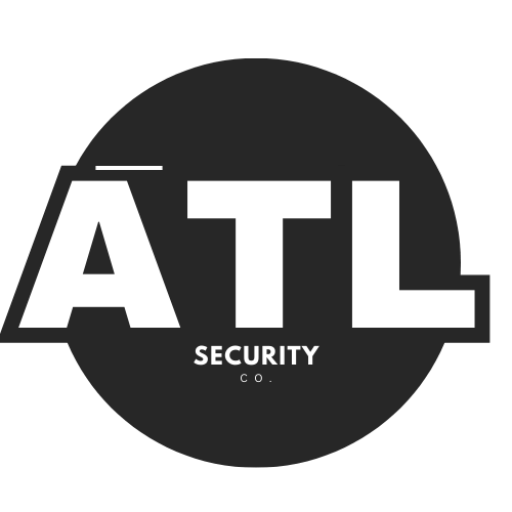The first step in responding to any incident that threatens the safety and security of a business is to conduct a thorough assessment of the premises. This involves evaluating the immediate environment for any potential hazards that could pose a risk to individuals present. For instance, if a fire has occurred, it is crucial to check for structural damage, smoke inhalation risks, or the presence of hazardous materials.
Employees and customers should be evacuated to a safe distance while trained personnel or emergency responders evaluate the situation. This assessment not only ensures the safety of those on-site but also provides critical information for subsequent actions. In addition to physical hazards, assessing the safety of the premises includes evaluating the emotional and psychological well-being of employees and customers.
Incidents such as fires, floods, or violent acts can leave individuals feeling vulnerable and anxious. Providing immediate support, such as counseling services or a safe space for individuals to gather, can help mitigate the emotional impact of the event. Furthermore, establishing a clear communication channel during this assessment phase is vital.
This allows for the dissemination of accurate information regarding safety protocols and updates on the situation, fostering a sense of security among those affected.
Key Takeaways
- Assess the safety of the premises to ensure no immediate danger to employees or customers
- Contact emergency services such as police, fire department, or medical services if necessary
- Secure the property by boarding up windows, locking doors, and preventing further damage
- Notify employees and customers about the situation and any temporary closures or changes in operations
- Document the damage by taking photos and videos for insurance claims and future reference
- Contact the insurance provider to report the damage and begin the claims process
- Begin the cleanup and restoration process to minimize further damage and restore the property
- Communicate with stakeholders such as investors, partners, and suppliers to keep them informed about the situation and any potential impact on business operations
Contact Emergency Services
Once the safety of the premises has been assessed, the next critical step is to contact emergency services. This action is paramount in situations involving fire, medical emergencies, or criminal activity. Dialing emergency numbers ensures that trained professionals are dispatched to handle the situation effectively.
For example, in the case of a fire, firefighters can assess the extent of the blaze and implement strategies to extinguish it while ensuring that all individuals are accounted for and safe. The prompt involvement of emergency services can significantly reduce damage and prevent further escalation of the incident. In addition to calling emergency services, it is essential to provide them with detailed information about the situation.
This includes specifics such as the nature of the emergency, the location of the premises, and any known hazards that responders may encounter upon arrival. Clear communication can expedite their response time and enhance their ability to manage the situation effectively. Furthermore, maintaining contact with emergency services throughout their response can facilitate coordination and ensure that all necessary resources are deployed.
Secure the Property

After emergency services have been contacted and are en route, securing the property becomes a priority. This involves taking steps to prevent unauthorized access to the premises, which could pose additional risks or complicate recovery efforts. For instance, if a break-in has occurred, securing entry points such as doors and windows is essential to deter further criminal activity.
This may involve boarding up windows or locking doors to ensure that no one can enter until law enforcement has completed their investigation. Securing the property also includes safeguarding sensitive information and valuable assets. Businesses should have protocols in place for protecting data and equipment during emergencies.
For example, if flooding is a concern, moving electronic devices and important documents to higher ground can prevent irreparable damage. Additionally, implementing security measures such as surveillance cameras or alarm systems can help monitor the premises during this vulnerable time. By taking proactive steps to secure the property, businesses can minimize potential losses and protect their interests.
Notify Employees and Customers
Once immediate safety concerns have been addressed and the property secured, it is crucial to notify employees and customers about the situation. Clear communication is key in these circumstances; individuals need to be informed about what has occurred, any potential risks they may face, and what steps are being taken to address the situation. For example, if a fire has caused an evacuation, employees should be updated on when it is safe to return or if they need to seek alternative arrangements.
In addition to providing information about the incident itself, businesses should also communicate their plans for recovery and support. This may include offering counseling services for employees who may be traumatized by the event or providing updates on when operations will resume. Keeping lines of communication open fosters trust and transparency, which are essential in maintaining morale during challenging times.
Utilizing various communication channels—such as emails, text messages, or social media—can ensure that all stakeholders receive timely updates.
Document the Damage
Documenting damage is a critical step in managing an incident effectively. This process involves taking detailed notes and photographs of any destruction or loss incurred during the event. For instance, if a flood has caused significant water damage to equipment and inventory, capturing visual evidence can be invaluable for insurance claims and recovery efforts.
Detailed documentation not only provides a clear record of what transpired but also serves as a basis for assessing financial losses. In addition to physical damage, it is important to document any disruptions to business operations. This includes noting how long operations were halted and any financial implications resulting from downtime.
Such records can be instrumental when negotiating with insurance providers or seeking assistance from government relief programs. By maintaining comprehensive documentation throughout this process, businesses can better navigate recovery efforts and ensure they receive appropriate compensation for their losses.
Contact Insurance Provider

Once damage has been documented, contacting the insurance provider is a crucial next step in managing an incident effectively. Businesses should review their insurance policies to understand what coverage is available for various types of incidents—be it property damage, business interruption, or liability claims. When reaching out to the insurance provider, it is essential to provide them with all relevant documentation collected during the assessment phase.
This includes photographs of damage, notes on operational disruptions, and any other pertinent information that supports the claim. Engaging with an insurance adjuster can also facilitate a smoother claims process. Adjusters are trained professionals who assess damages and determine compensation based on policy terms.
It is advisable for business owners to maintain open lines of communication with their insurance provider throughout this process, asking questions and seeking clarification on any aspects of their coverage that may be unclear. Understanding policy details can help businesses avoid potential pitfalls during claims processing and ensure they receive fair compensation for their losses.
Begin Cleanup and Restoration Process
Once insurance matters are underway, businesses can begin the cleanup and restoration process. This phase is critical not only for returning operations to normal but also for ensuring that safety standards are met before reopening to employees and customers. Depending on the nature of the incident—be it fire damage or flooding—cleanup efforts may involve removing debris, sanitizing affected areas, or repairing structural damage.
Engaging professional restoration services can expedite this process while ensuring that all work meets industry standards. During cleanup efforts, it is essential to prioritize safety by using appropriate personal protective equipment (PPE) and following safety protocols. For example, if mold growth is a concern following water damage, specialized equipment may be necessary to safely remove contaminated materials without posing health risks to workers involved in cleanup efforts.
Additionally, businesses should communicate with employees about safety measures being implemented during this phase to foster a sense of security as they return to work.
Communicate with Stakeholders
Throughout this entire process, effective communication with stakeholders remains paramount. Stakeholders include not only employees and customers but also suppliers, investors, and community members who may be affected by the incident or involved in recovery efforts. Regular updates on progress—whether regarding cleanup efforts or operational status—can help maintain trust and transparency among all parties involved.
Utilizing various communication channels can enhance outreach efforts; for instance, social media platforms can be effective for real-time updates while formal emails may be more suitable for detailed reports on recovery progress. Additionally, hosting meetings or forums where stakeholders can ask questions or express concerns can foster engagement and collaboration during challenging times.
By prioritizing open communication with stakeholders throughout recovery efforts, businesses can strengthen relationships and build resilience against future incidents.
FAQs
What should I do immediately after a fire at my business?
After a fire at your business, it is important to prioritize safety and contact emergency services. Once the fire is extinguished, you should assess the damage, secure the premises, and begin the process of filing an insurance claim.
How do I ensure the safety of my employees and customers after a fire?
After a fire, it is crucial to ensure the safety of your employees and customers by assessing the structural integrity of the building, checking for any potential hazards such as electrical issues or gas leaks, and communicating with everyone involved about the situation and any necessary evacuation or safety procedures.
What steps should I take to assess the damage to my business after a fire?
To assess the damage to your business after a fire, you should work with fire officials and insurance adjusters to document the extent of the damage, including structural damage, inventory loss, and any other affected assets. It is important to take photographs and make detailed lists of all damaged items.
How do I secure my business premises after a fire?
After a fire, it is important to secure your business premises to prevent further damage or potential looting. This may involve boarding up windows and doors, installing temporary fencing, and implementing security measures to protect any salvageable assets.
What is the process for filing an insurance claim after a fire at my business?
Filing an insurance claim after a fire at your business involves documenting the damage, contacting your insurance company, and providing them with the necessary information and documentation to support your claim. It is important to review your insurance policy and understand the coverage and claims process.




